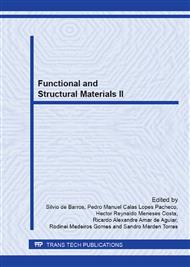p.41
p.49
p.57
p.65
p.77
p.83
p.89
p.99
p.107
Corrosion Fatigue Behavior of Flexible Pipe Tensile Armor Wires in a CO2 Environment
Abstract:
The new offshore areas being explored in Brazil presents higher concentration of CO2 compared with most existing offshore fields. The presence of these more aggressive environments has led to the development of new technologies. Due to the construction characteristics of flexible pipes, any increase in CO2 concentration in the conveyed fluid will, in turn, increase the CO2 concentration in the pipe annulus, subjecting the metallic armor layers to a more aggressive environment. Evaluation of the CO2 effects of corrosion fatigue behavior in tensile armor wires is therefore of vital importance. A comprehensive corrosion fatigue experiment for tensile armor wires in environments up to 10 bar of CO2, has been established and the experimental results have shown a fatigue life reduction in the tensile amour wires due to higher levels of CO2.
Info:
Periodical:
Pages:
77-82
Citation:
Online since:
June 2013
Keywords:
Price:
Сopyright:
© 2013 Trans Tech Publications Ltd. All Rights Reserved
Share:
Citation:


